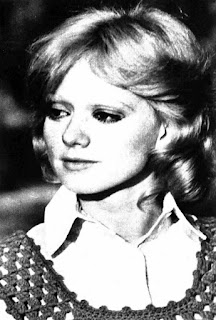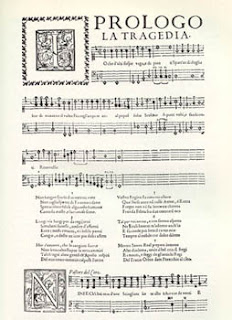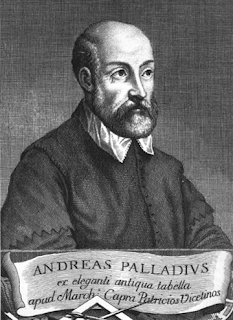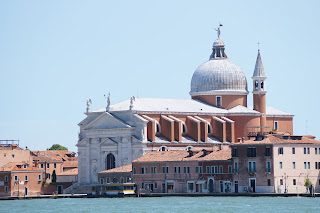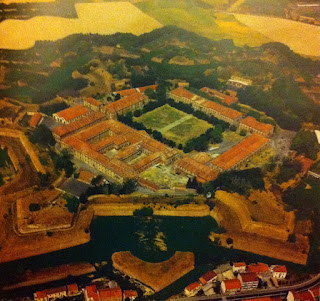Sicilian thought to be model for Mario Puzo's Godfather
 |
| Carlo Gambino, pictured in a mug shot that the New York police had on file in the 1930s |
For almost two decades up to his death in 1976, he was head of the Gambino Crime Family, one of the so-called Five Families that have sought to control organised crime in New York under one banner or another for more than a century.
He is thought to have been the real-life Don that author Mario Puzo identified as the model for Vito Corleone, the fictional Don created for the best-selling novel, The Godfather.
During Gambino's peak years, the family's criminal activities realised revenues of an estimated $500 million per year. Yet Gambino, who kept a modest house in Brooklyn and a holiday home on Long Island, claimed to make a living as a partner in a company that advised on labour relations.
Despite coming under intensive surveillance by the FBI, he managed to avoid prison during a life spent almost exclusively in crime. Everything he did was planned meticulously to avoid detection, even down to communicating with associates through coded messages.
Gambino was born into a Sicilian family who were part of the so-called Honoured Society and moved to the United States in December 1921, by which time though still only 19 he was already able to call himself a 'Made Man' in Mafia parlance, having carried out a number of murders in the Palermo area.
He reached America as a stowaway on a ship that docked in Norfolk, Virginia, having survived allegedly on a diet of anchovies and wine. From Virginia he travelled to New York, staying with cousins from the Castellano family.
Gambino was introduced to a crime family run by another Sicilian, Salvatore 'Toto' D'Aquila, and became part of a gang of young Jewish and Italian mobsters known as the Young Turks that included Charles 'Lucky' Luciano, also Sicilian. Gambino soon became a prominent figure in the New York underworld but it would take him more than 35 years to establish himself as the city's most powerful Mafia boss.
 |
| Charles 'Lucky' Luciano, Gambino's rival and sometimes ally, who established the Mafia Commission |
Although he had ambitions of his own, he was also motivated by the knowledge that a Mafia not at war with itself would generate much greater profits for all concerned, hence he always respected Luciano, later a rival, but who set up The Commission as a Mafia governing body designed to settle disputes.
He moved up one place in the pecking order in 1951, when Mangano disappeared, presumed murdered, and Albert Anastasia, the notorious head of the execution squad known as Murder Incorporated, took charge.
The chance to grab control himself came in 1957 when Anastasia, prone to irrational outbursts, broke a Mafia rule that forbade the murder of outsiders, a code of conduct that had nothing to do with morals but which simply sought to prevent unwanted scrutiny from the authorities.
Gambino, reasoning that Anastasia was now discredited, teamed up with another mobster with designs on power and arranged to Anastasia to be killed, clearing the way for Gambino to seize control of Mangano's former empire and rename it after himself.
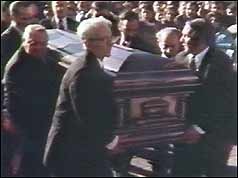 |
| Gambino's coffin arrives at his funeral |
His funeral at a church in a quiet residential area of Brooklyn was a ticket-only affair attended by 2000 people, including prominent members of all the Five Families, as well as numerous plain clothes detectives and FBI agents, who witnessed Gambino's body being buried in a $7,000 dollar bronze coffin.
Travel tip:
Despite its unfortunate associations with the history of organised crime, Palermo is well worth visiting. The capital of Sicily, it is a vibrant city with a wealth of beautiful architecture bearing testament to its rich history. It has examples of Romanesque, Gothic and Baroque churches and palaces, while the Palazzo dei Normanni, the seat of the Sicilian Regional Assembly, is a marvellous example of Norman architecture.
 |
| The magnificent Teatro Massimo in Palermo |
Palermo's Renaissance-style Teatro Massimo, opened in 1897, is the largest opera house in Italy and the third biggest in Europe after the Opéra National de Paris and the K. K. Hof-Opernhaus in Vienna. It was originally designed with an auditorium for 3,000 people, although today there is a limit of 1,350. There are also seven tiers of boxes. Enrico Caruso sang in a performance of La Gioconda during the opening season, returning to perform in Rigoletto at the end of his career. The theatre was closed for renovation for more than 20 years but reopened in 1997. The final scenes of the third part of The Godfather Trilogy, based in Puzo's novel, was filmed there.
More reading:
Nino Rota - more to his music than just The Godfather
(Photo of Teatro Massimo by Bernhard J. Scheuvens CC BY-SA 2.5)
Home

